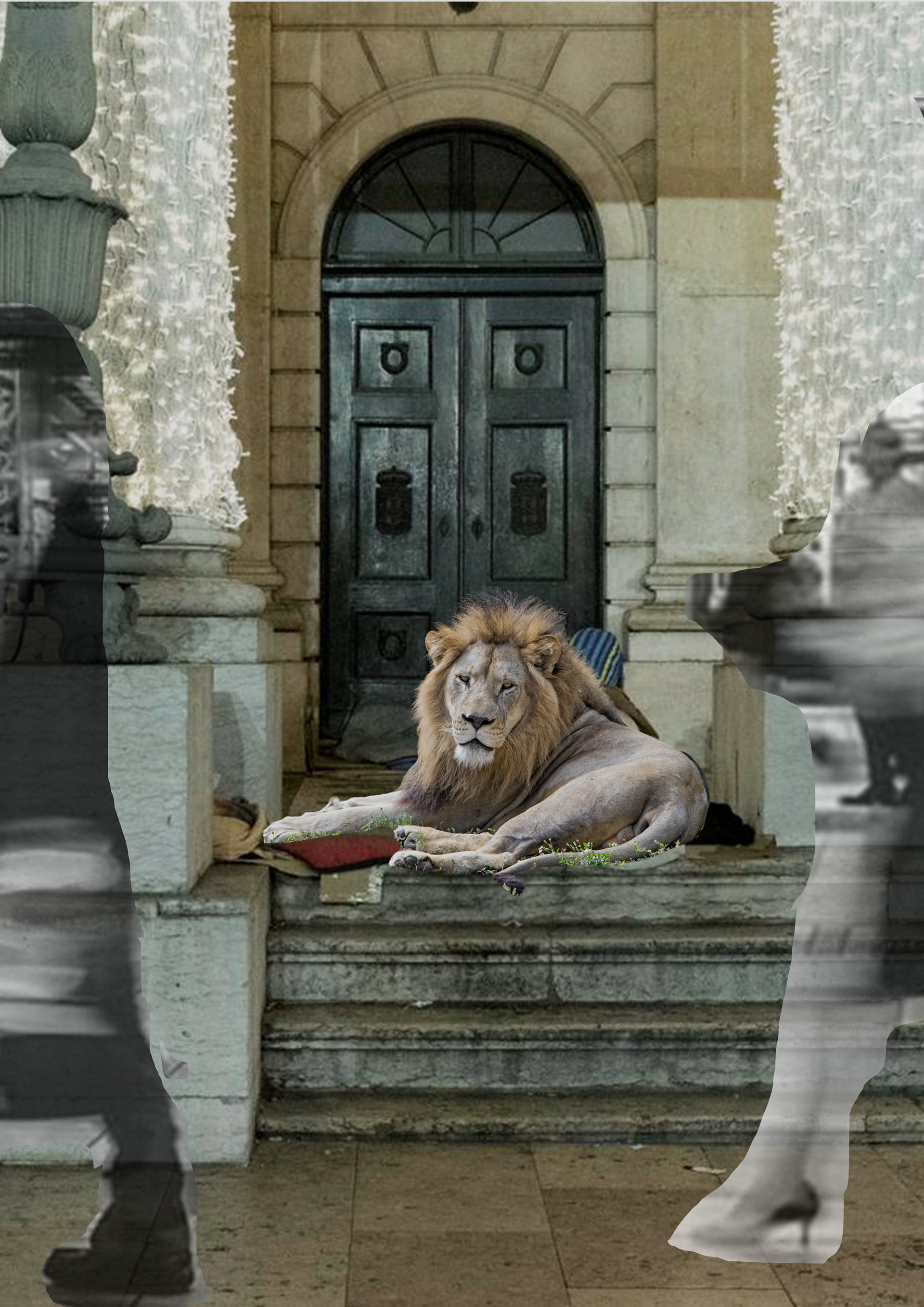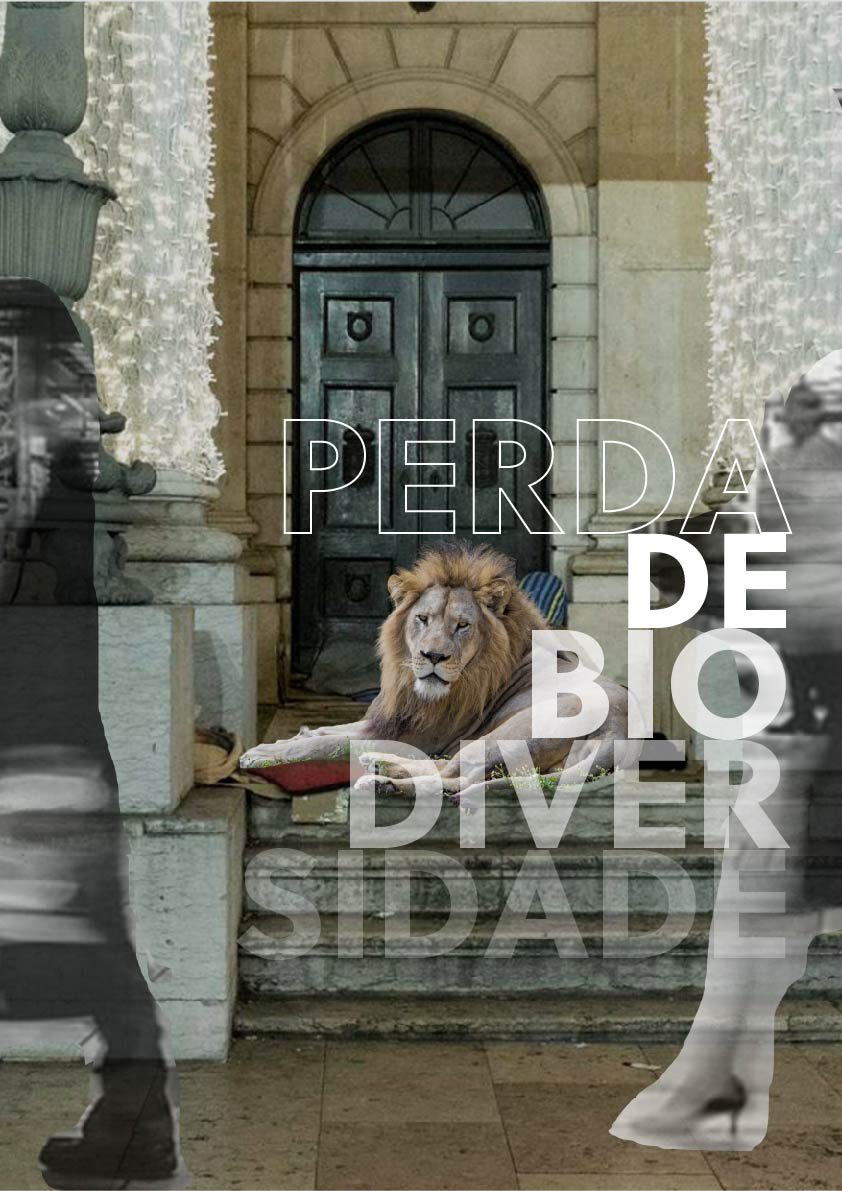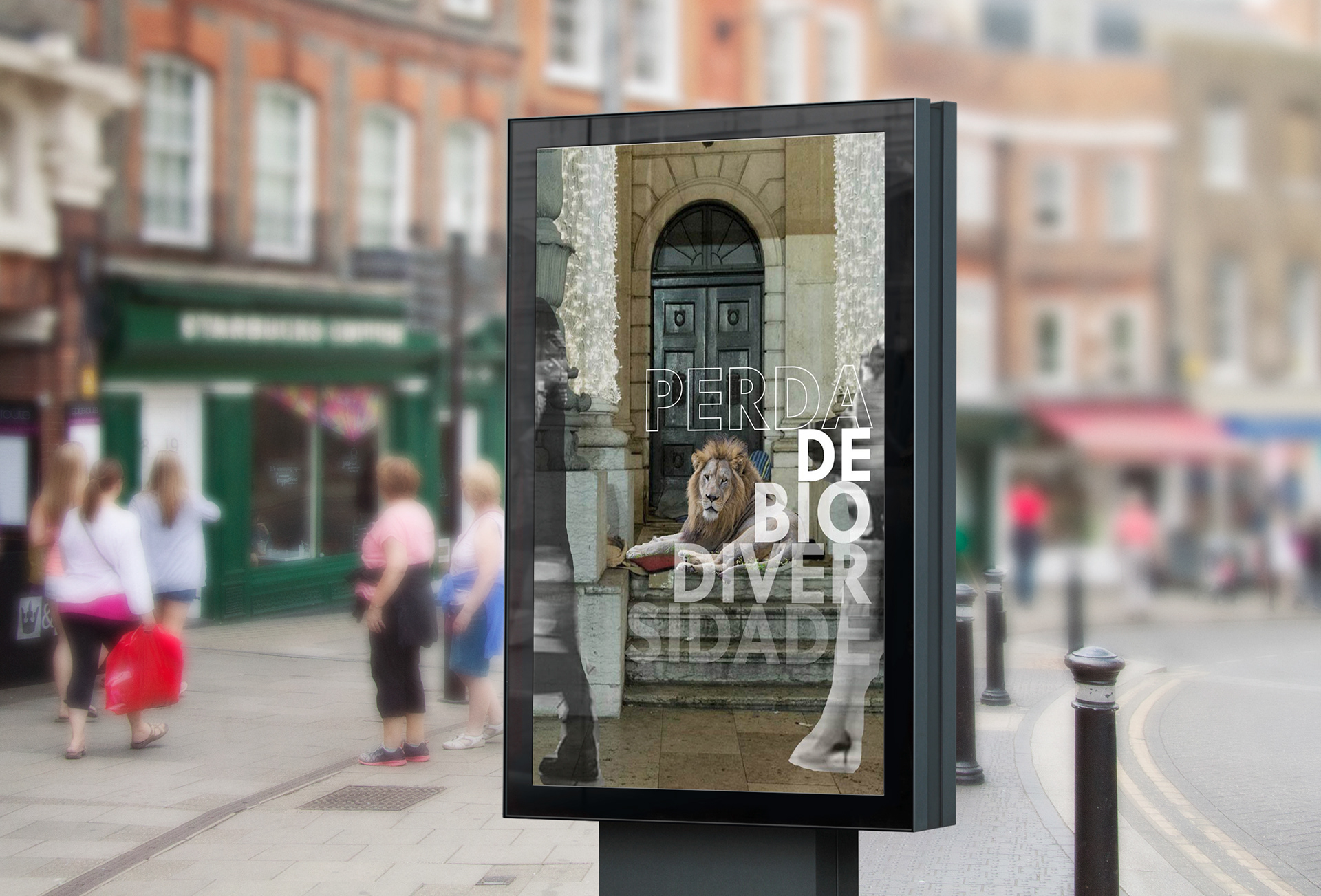


This poster was developed through analog and digital collage techniques, focusing on the relationship between humans,
objects, and space. The central concept is built around
the idea of “a homeless lion”, used as a symbolic figure
to evoke empathy and urgency.
objects, and space. The central concept is built around
the idea of “a homeless lion”, used as a symbolic figure
to evoke empathy and urgency.
Urbanization—one of the most immediate and visible causes
of biodiversity loss—is at the core of this visual narrative.
By placing a lion, a widely recognized and admired animal,
in a vulnerable urban setting, the work draws attention to the human impact on natural habitats. The image suggests that the destruction of ecosystems is not distant—it’s happening just outside our homes.
of biodiversity loss—is at the core of this visual narrative.
By placing a lion, a widely recognized and admired animal,
in a vulnerable urban setting, the work draws attention to the human impact on natural habitats. The image suggests that the destruction of ecosystems is not distant—it’s happening just outside our homes.
The title Loss of Biodiversity uses Soleil, a bold, all-caps sans serif typeface to maximize clarity and impact. The word “Loss” appears as an outline, reinforcing the sense of absence and emptiness. The remaining text fades progressively, reflecting
the accelerating disappearance of species and the lack
of control over this process.
the accelerating disappearance of species and the lack
of control over this process.
Academic Project
F04 Man as the measure of all things
Course: Communication Design
(UC Design Fundamentals)
Institution: ESAD Matosinhos
(Escola Superior de Artes e Design)
Professor: João Lemos
Academic Year: 2022/2023
Date: November 2022
F04 Man as the measure of all things
Course: Communication Design
(UC Design Fundamentals)
Institution: ESAD Matosinhos
(Escola Superior de Artes e Design)
Professor: João Lemos
Academic Year: 2022/2023
Date: November 2022